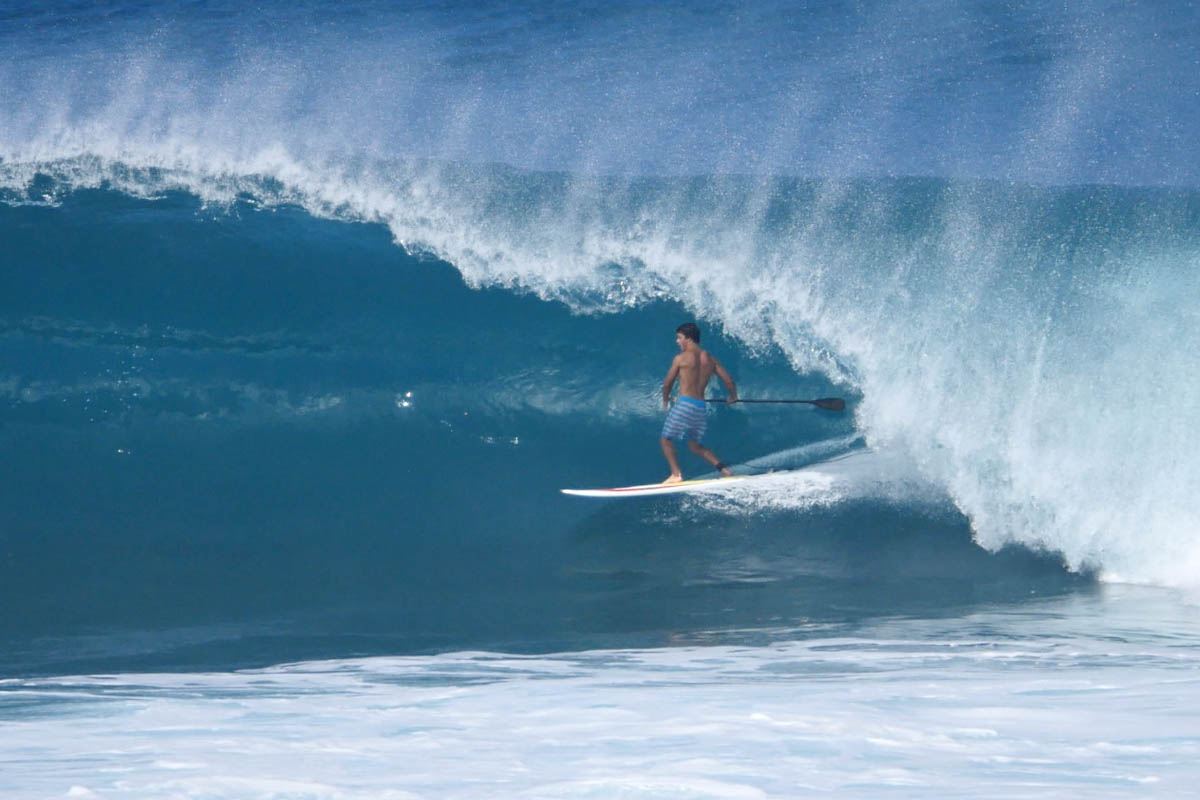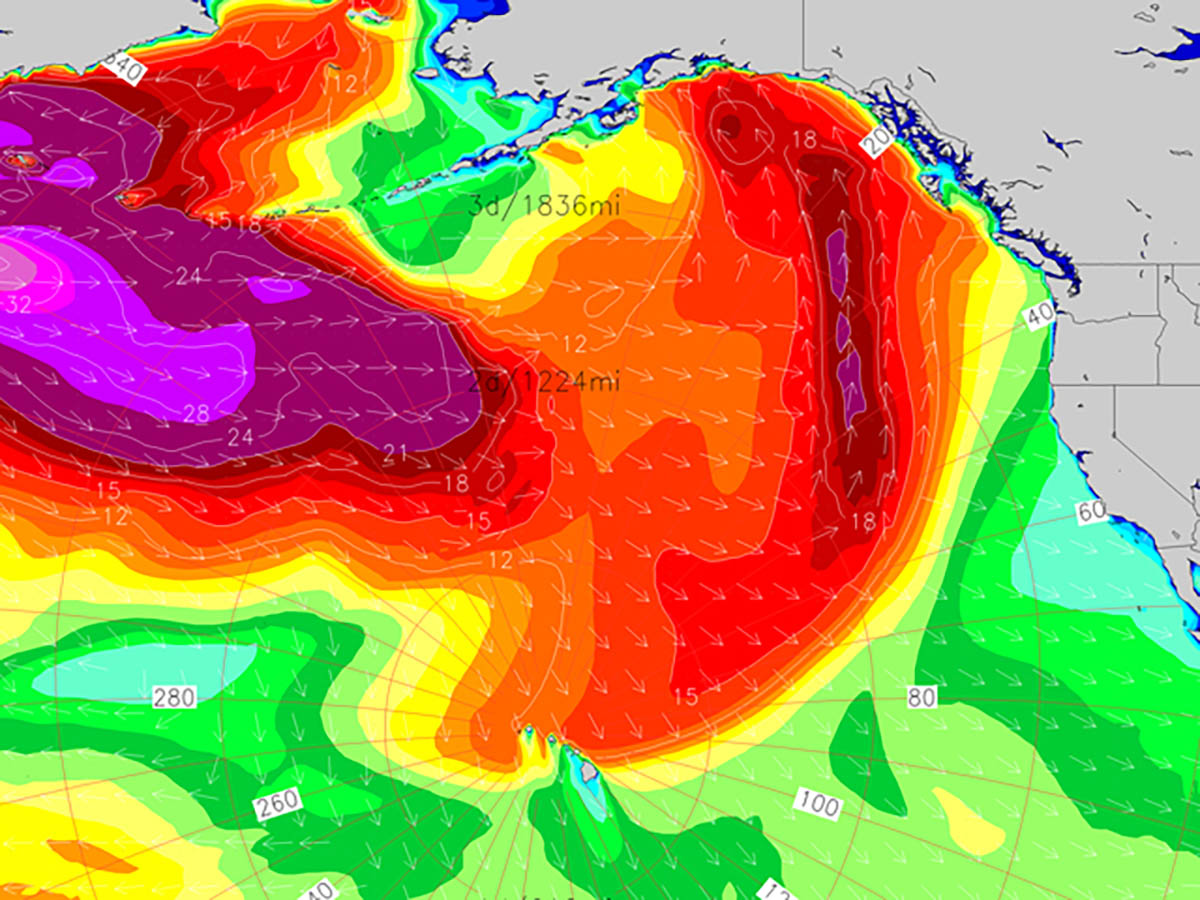Big-wave standup paddle surfer and Black Project athlete Mo Freitas knows a thing or two about SUP surfing six-story waves. He’s been chasing big swell in the Hawaiian islands since his preteens, inspired by big-wave demigods like Laird Hamilton and Brock Little. Mo’s spent the better half of his life chasing giants, earning a wealth of knowledge that’s invaluable to paddlers looking to step up their big-wave performance.
When talking about big waves, everything is relative. For many of us it is more about increasing our confidence as the waves get bigger and more challenging. What you or I might see as being ‘big’ would be small for Mo and his peers. The advice below is aimed at encouraging us all to challenge our own limits, whether that be head- or triple-overhead high surf.
On Equipment
Mo: The first step to approaching big-wave SUP surfing is getting your equipment dialed. Big-wave equipment is totally different than regular surfing gear. Boards break easier, leashes snap and there are a lot more variables that can go wrong. I use a much thicker leash and multiple leash strings, a padded wetsuit and even an inflatable vest sometimes. Getting worked by giant waves takes a lot out of you and that floatation really helps me conserve energy.
As far as boards go, you need to have a gun. I use the same guns for standup big-wave surfing as I do for prone because they have so much volume that I’m able to stand on them. My quiver ranges from 9’0” to 10’4”, but it’s different for everyone. Really, it’s about having equipment that you’re comfortable on.
Mo’s top tips for choosing the right SUP paddle for you.
For fins, I always run a quad fin setup for added speed and drive. You won’t be doing the crazy pivotal turns that thrusters are good for and quads are better for stability and setting your line in big surf. And of course, you need a really good surf paddle, so I always go with Surge. Last but not least, you want to have a backup for every piece of gear…the bigger it is, the more things tend to break.
Learn why the Surge is SUP surfing’s best paddle.
If you are looking to get into bigger surf than you are used to, it is always easier with a little more foam under your feet. A more floaty, longer board will help you get into position and enable you to paddle faster. This helps you take off a little earlier in a less critical part of the wave. A bigger board will also help you get out of trouble if you get caught inside.
On Training
Training is everything. It’s all you want to rely on. When we go out to surf this kind of stuff, we know we’re coming home after because we’re confident in our skillset. It’s still scary, but if you train hard, you can earn the ability to be out there.
There’s no better practice for SUP surfing than SUP surfing. However, I find SUP race workouts and OC-1 paddling to be great for big wave surfing because those exercises constantly fluctuate your heart rate. The best SUP surfing workouts for me incorporate both a heart rate exercise and breath hold training.
For breath training, I like to blow all the air out of my lungs then hold my breath as long as I can. It combats the carbon dioxide buildup, which is what makes you get uncomfortable and panic.
Another really important thing is flexibility. Your body can get pretty twisted up in a bad wipeout, so I’m constantly stretching and doing a lot of yoga too.
Learn how to use your paddle to prevent injures.
This same approach can be adopted by all paddlers, the fitter, stronger and more physically prepared you are for surfing the better. Physical preparation will give you more confidence and the ability to cope with scary and dangerous situations. Being mentally prepared is as important as physical conditioning, knowing why you are challenging yourself is important.
On Safety
Again, safety mainly comes back to training. You need to be experienced in heavy water and able to hold your breath while getting rag-dolled. Equipment is also key to safety and sometimes that’s having a rescue ski out there with you. That said, a lot of times when you wipe out on the first wave of a giant set, there’s not enough time before the next wave for a ski to rescue you. You can end up taking a lot of waves on the head and you need to be ready for a pounding.
The most important thing is to have a partner that you trust, someone who’s equally as ready as you. You don’t always need a ski, but you need someone looking after you. Just like with scuba diving, when you’re doing something with that kind of risk you want someone else watching out for your safety. You can train for a worst case scenario all your life, but when it happens you’ll be happy to have help from your partner.
On Tracking Swell
When it comes to actually finding a good big wave to surf, it’s all about tracking swell and weather conditions. We watch swell all over the world, look at direction, size, weather conditions and then try to predict when and where big surf is going to happen. The best big wave surfers in the world are constantly looking for the next big storm and where it’s going to hit. Before you ever attempt SUP surfing bigger waves, you need to be able to find them with good conditions.
The example swell map below (from December 2017) shows a large storm in the North Pacific which will send large swell towards Hawaii. Surfers watch the offshore buoys to see how big it it is going to be and where is the best place to surf; it is all about timing. With improved swell and weather predictions, we have seen an increase in athletes traveling the globe at a moment’s notice. The WSL Big Wave Tour has capitalized on this and has helped to revolutionize big wave surfing.
Useful Swell & Wave Prediction Resources
On Big Wave SUP Surfing Technique
Wherever you’re surfing, you need to understand the lineup—where the wave breaks, how the sets are working, what the current’s doing, where to take off. Study the lineup and slowly ease your way into it. When it comes to actually surfing the wave, you really need to be under the lip and deeper than you’d expect. Big waves move so fast that you’ll just get blown out the back and the wave will pass you unless you’re right in the critical section.
How to Choose the Right SUP Paddle for You
Getting comfortable taking off that deep takes time and experience surfing that kind of energy. I’ve been surfing every big wave swell that’s been had in Hawaii since I was 11 years old, and I’m still learning and getting more comfortable. Time in the water is really the best way to prepare.
It is important to know your own limits. With the right approach, the correct training and appropriate equipment all of us can challenge ourselves to surf bigger waves. Not to mention, the ability to conquer your fears will help you face other obstacles in life with more ease.
More SUP Surfing Resources
SUP surfing tips from pro paddler Zane Schweitzer.
Why the Surge is SUP surfing’s best paddle.
The Five Phases of Proper SUP Stroke Technique
5 Steps to Choosing & Customizing Your Paddle
The Catch – Fixing the Most Important Part Of Your Paddle Stroke







